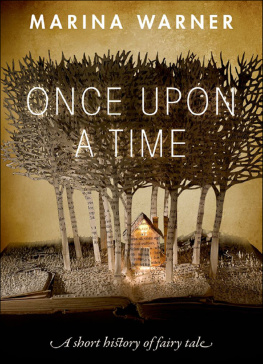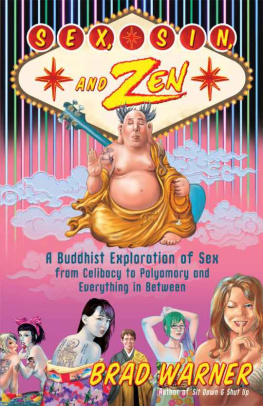Warner - Once upon a Time
Here you can read online Warner - Once upon a Time full text of the book (entire story) in english for free. Download pdf and epub, get meaning, cover and reviews about this ebook. year: 2014, publisher: Oxford University Press, Incorporated, genre: Art. Description of the work, (preface) as well as reviews are available. Best literature library LitArk.com created for fans of good reading and offers a wide selection of genres:
Romance novel
Science fiction
Adventure
Detective
Science
History
Home and family
Prose
Art
Politics
Computer
Non-fiction
Religion
Business
Children
Humor
Choose a favorite category and find really read worthwhile books. Enjoy immersion in the world of imagination, feel the emotions of the characters or learn something new for yourself, make an fascinating discovery.
Once upon a Time: summary, description and annotation
We offer to read an annotation, description, summary or preface (depends on what the author of the book "Once upon a Time" wrote himself). If you haven't found the necessary information about the book — write in the comments, we will try to find it.
Once upon a Time — read online for free the complete book (whole text) full work
Below is the text of the book, divided by pages. System saving the place of the last page read, allows you to conveniently read the book "Once upon a Time" online for free, without having to search again every time where you left off. Put a bookmark, and you can go to the page where you finished reading at any time.
Font size:
Interval:
Bookmark:

Great Clarendon Street, Oxford, OX2 6DP, United Kingdom
Oxford University Press is a department of the University of Oxford. It furthers the University's objective of excellence in research, scholarship, and education by publishing worldwide. Oxford is a registered trade mark of Oxford University Press in the UK and in certain other countries
Marina Warner 2014
The moral rights of the author have been asserted
First Edition published in 2014
Impression: 1
All rights reserved. No part of this publication may be reproduced, stored in a retrieval system, or transmitted, in any form or by any means, without the prior permission in writing of Oxford University Press, or as expressly permitted by law, by licence or under terms agreed with the appropriate reprographics rights organization. Enquiries concerning reproduction outside the scope of the above should be sent to the Rights Department, Oxford University Press, at the address above
You must not circulate this work in any other form and you must impose this same condition on any acquirer
Published in the United States of America by Oxford University Press 198 Madison Avenue, New York, NY 10016, United States of America
British Library Cataloguing in Publication Data Data available
Library of Congress Control Number: 2014940242
ISBN 9780198718659
ebook ISBN 9780191028779
Printed in Italy by L.E.G.O. S.p.A.
Links to third party websites are provided by Oxford in good faith and for information only. Oxford disclaims any responsibility for the materials contained in any third party website referenced in this work.
To Carolina, Riccardo, Sofia, and Hartley
(tesoro meraviglioso)
I have been thinking about fairy tales for a while, and friends, students, and colleagues have asked questions and made comments that have helped me hugely and crucially in the making of this book. For ten years, Ive taught courses on fairy tales, given classes and talks, and written articles on various aspects of the topic. I would like to thank everyone who has invited me to speak, come to hear me, raised or discussed issues with me, and I offer heartfelt gratitude in particular to Jack Zipes, the well-named hero of fairy tale studies and mentor to so many readers and scholars; to Donald Haase, Cristina Bacchilega, and Anne Duggan, editors of the journal Marvels & Tales; Martine Hennard-Dutheil at the University of Lausanne; Daniela Corona and Valentina Castagna at the University of Palermo; Hilary Ballon of New York University, Abu Dhabi; Val Morgan, Peter Hulme, Jonathan Lichtenstein, Philip Terry, Karin Littau, Elizabeth Kuti, Adrian May, and Sanja Bahun at the University of Essex; Kevin Dawson of Whistledown Productions; Mary-Kay Wilmers, editor of the London Review of Books; to Andrea Keegan, and others among many editors at Oxford University Press, for their patience over the years it took; and to Beatrice Dillon for her help throughout, especially in the thickets of the cyberwood.
To Graeme Segal, believer in another kind of other world (that of mathematical reality), my love and endless thanks.
Imagine the history of fairy tale as a map, like the Carte du Tendre, the Map of Tenderness, drawn by Parisian romancers to chart the peaks and sloughs of the hearts affections: unfurl this imaginary terrain in your minds eye, and you will first see two prominent landmarks, Charles Perraults Histoires et Contes du temps pass (Tales of Olden Times, 1697) and a little nearer in the foreground, the Grimm Brothers Kinder- und Hausmrchen (Childrens and Household Tales, 181257). These collections dominate their surroundings so imposingly that they make it hard to pick out other features near or far.
Gradually, however, as your eyes adjust to the dazzle, several more features of the scene begin to grow in definition and give you better bearings: along a whole web of routes from points further east, The Tales of the Thousand and One Nights form deep aquifers of story running through the entire expanse, and emerging here and there in waterfalls and powerful rivers spreading through wide floodplains. Harbours and market-places and pilgrimage sitesVenice, Naples, Genoa, Sicily, in Italy alonebegin to emerge as significant centres of talkative storytelling populations.
To the north, Hans Christian Andersens glowing Danish homeland is emitting powerful signals from regions stretching to the Arctic circle; and when your eyes track his large force field, you begin to discover beacons blazing in the darkness, lit by the work of Walter Scott in Scotland, Alexander Afanasyev in Russia, and other omnivores of their countries stories. The circumpolar regions, as well as the steppes and forests of Russia and Central Asia, are also rich in fairy tale ore: the ogress Baba Yaga lives deep in the forest in a hut that runs around on chicken legs, loves to eat children (but plucky Vasilissa the Beautiful foils the witchs plans, see ). Baba Yaga, like her counterparts farther south, sometimes takes a more innocent fancy to one of the heroes or heroines, and showers them with boons and blessings.
If you could turn this fictive atlas into an advent calendar and open windows in the scenery, you would then see scores of storytellers and inventors gathering, interpreting, re-visioning the materialhidden away hard at work in Ireland are Speranza Wilde and her son Oscar, W. B. Yeats and his patron Lady Gregory; in Wales, Charlotte Guest, who established the first English Mabinogion, a treasury of marvellous stories; in Zurich and Vienna, Carl Jung and Sigmund Freud; in Toronto, Japan, and South London, Margaret Atwood and Angela Carter. In full view and in close-up, windows that are in fact not windows but movie screens are shimmering with the works of inspired adaptorsJean Cocteau with La Belle et la bte (1946), a poetic, slow-moving romance that crystallizes the seductive mysterious eros at the heart of fairy tale. Film adaptors and producers, stage directors, and designers are busy refashioning fairy tales for audiences of all ages, creating theatrical spectacles that combine circus techniques, masking, song and dance in the raucous and sentimental lineage of pantomime. Therapists, performance artists, couturiers, and photographers a festive cavalcade of those professions now called creative content providers are losing themselves in the forests of fairy tale in order to come back with baskets of strawberries picked in the snow.
There remain many more windows to open; in fact theyre numberless, and besides it becomes clear that the scenery is not stable, for the land masses and landmarks are floating in a vast ocean, the Ocean of Story, which, like the cosmic river of the ancient world, encircles the earth since recorded time. The light keeps changing over the scene, now plunging a once prominent element into shadow, then turning its beam on another hitherto disregarded part of the territory.
Stories slipped across frontiers of culture and language as freely as birds in the air as soon as they first began appearing; fairy tales migrate on soft feet, for borders are invisible to them, no matter how ferociously they are policed by cultural purists.
The Ocean of Story is the title of one of the most ancient collections of fairy talesa phrase Salman Rushdie adapted for his fable, Haroun and the Sea of Stories. We swim, float, or navigate this fluid and marvellous body of water as a matter of course; mass media, television, game shows, video games, and every kind of popular entertainment trawl it daily to bring up plots and characters, animals and motifs.
Font size:
Interval:
Bookmark:
Similar books «Once upon a Time»
Look at similar books to Once upon a Time. We have selected literature similar in name and meaning in the hope of providing readers with more options to find new, interesting, not yet read works.
Discussion, reviews of the book Once upon a Time and just readers' own opinions. Leave your comments, write what you think about the work, its meaning or the main characters. Specify what exactly you liked and what you didn't like, and why you think so.



















